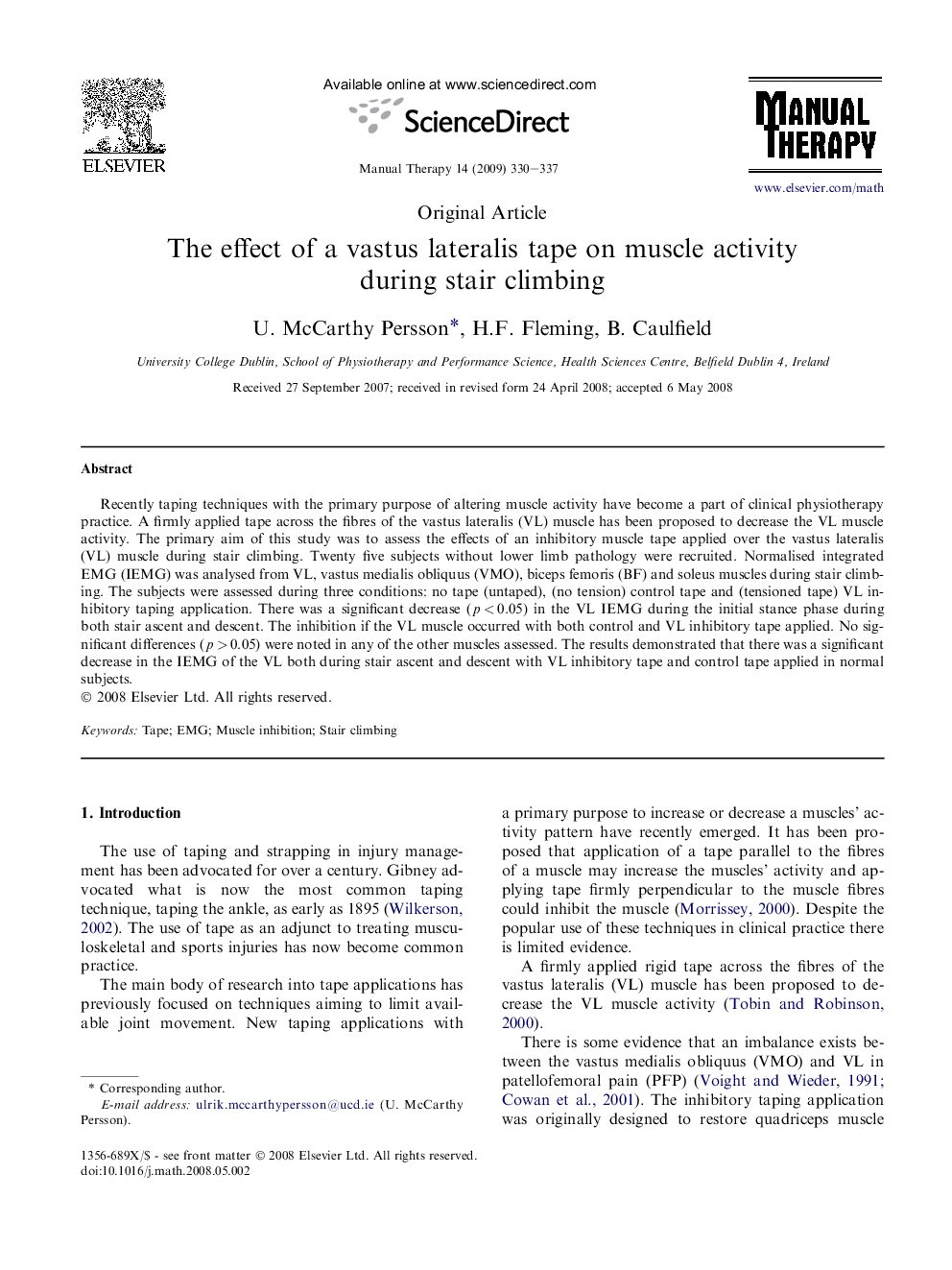| Article ID | Journal | Published Year | Pages | File Type |
|---|---|---|---|---|
| 2625548 | Manual Therapy | 2009 | 8 Pages |
Recently taping techniques with the primary purpose of altering muscle activity have become a part of clinical physiotherapy practice. A firmly applied tape across the fibres of the vastus lateralis (VL) muscle has been proposed to decrease the VL muscle activity. The primary aim of this study was to assess the effects of an inhibitory muscle tape applied over the vastus lateralis (VL) muscle during stair climbing. Twenty five subjects without lower limb pathology were recruited. Normalised integrated EMG (IEMG) was analysed from VL, vastus medialis obliquus (VMO), biceps femoris (BF) and soleus muscles during stair climbing. The subjects were assessed during three conditions: no tape (untaped), (no tension) control tape and (tensioned tape) VL inhibitory taping application. There was a significant decrease (p < 0.05) in the VL IEMG during the initial stance phase during both stair ascent and descent. The inhibition if the VL muscle occurred with both control and VL inhibitory tape applied. No significant differences (p > 0.05) were noted in any of the other muscles assessed. The results demonstrated that there was a significant decrease in the IEMG of the VL both during stair ascent and descent with VL inhibitory tape and control tape applied in normal subjects.
